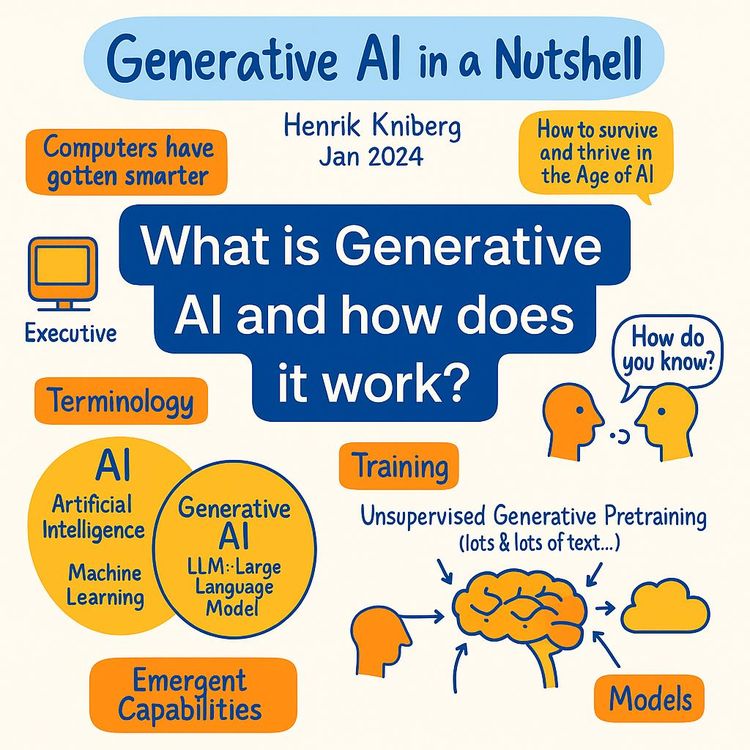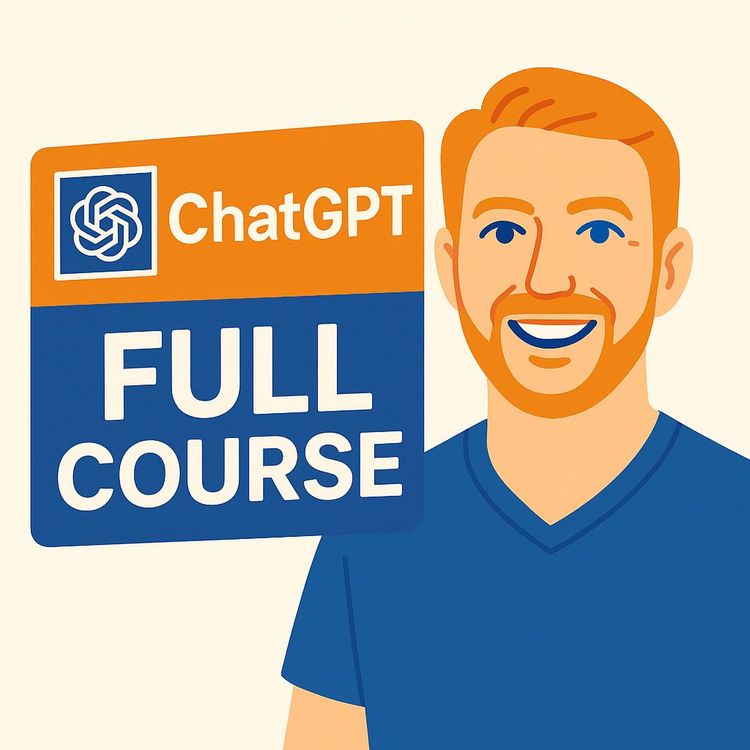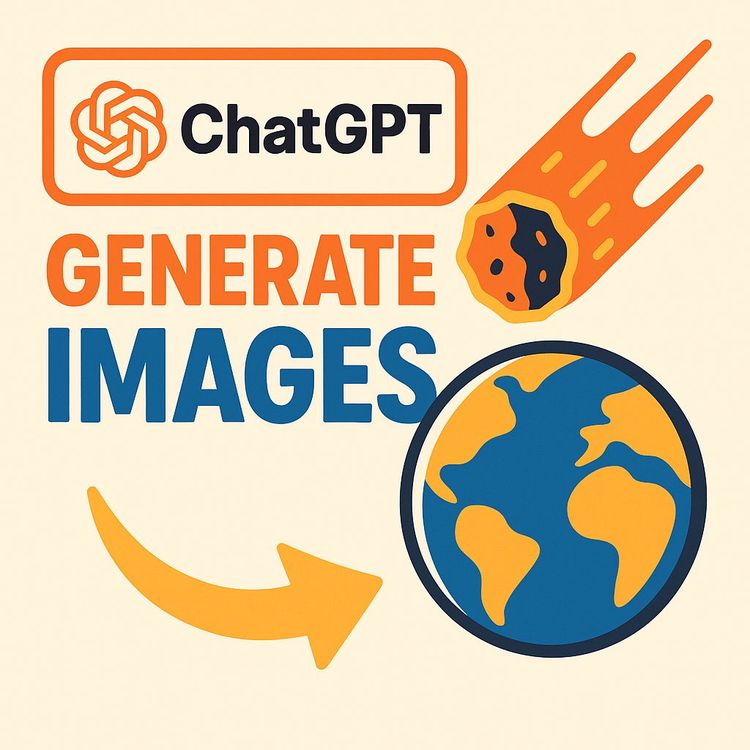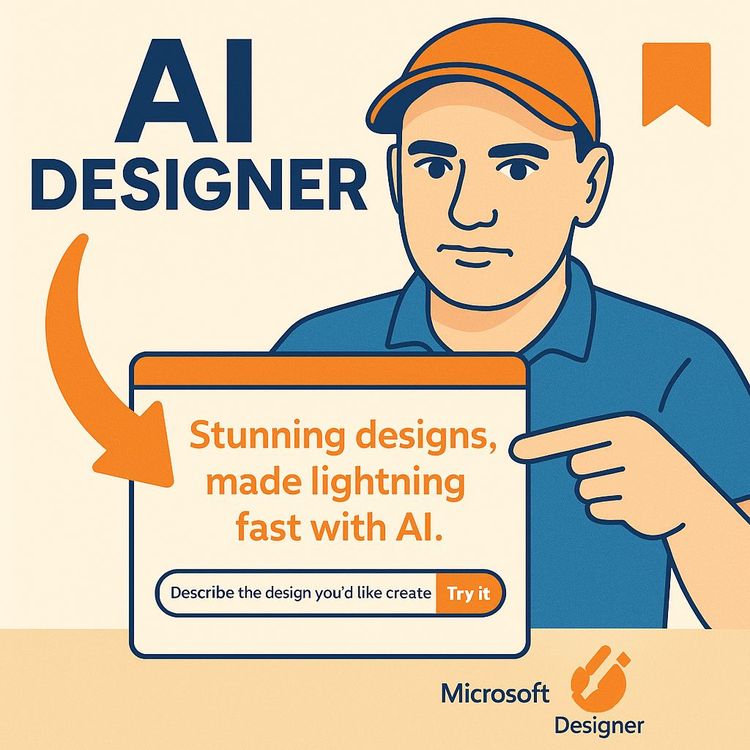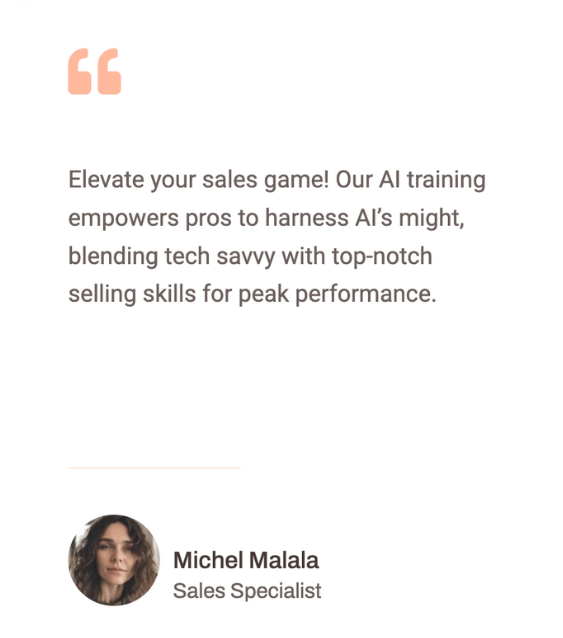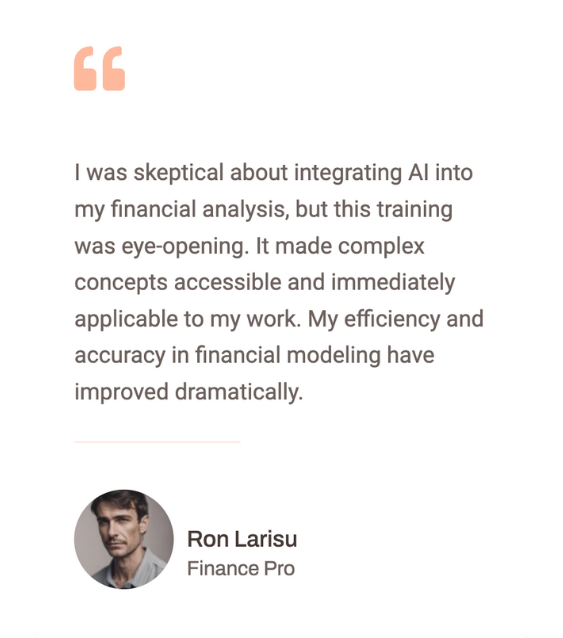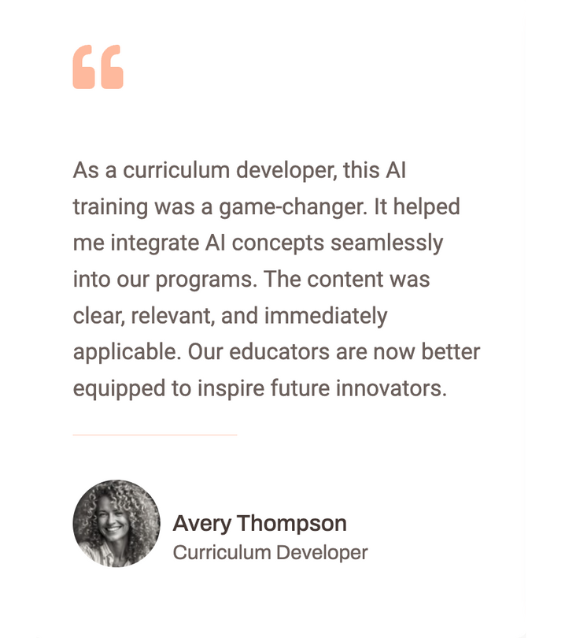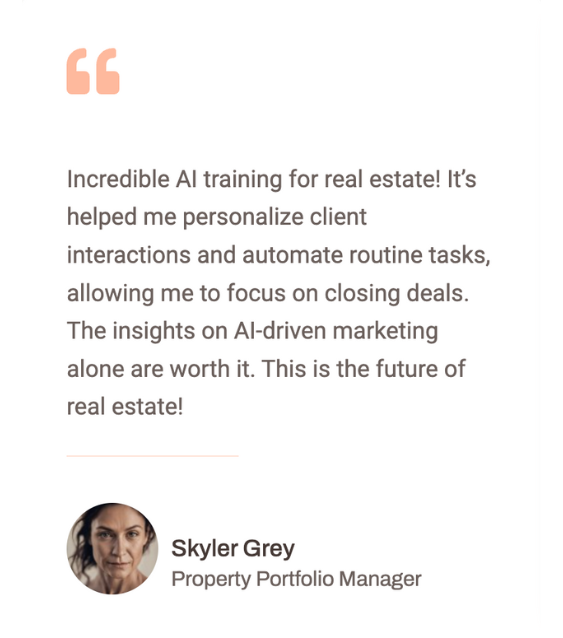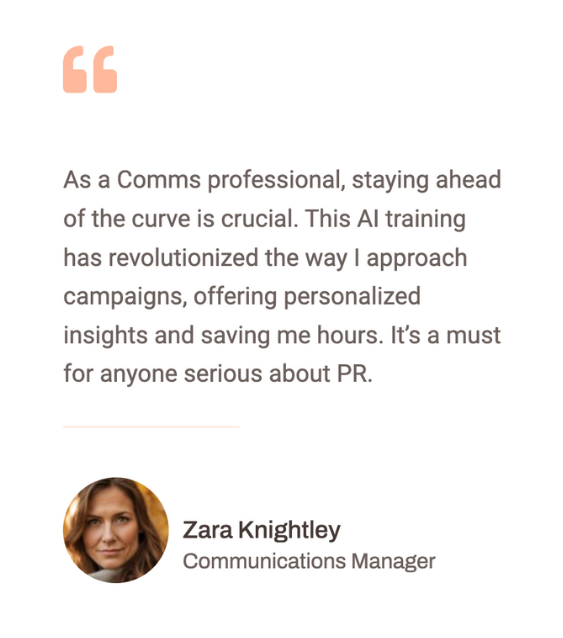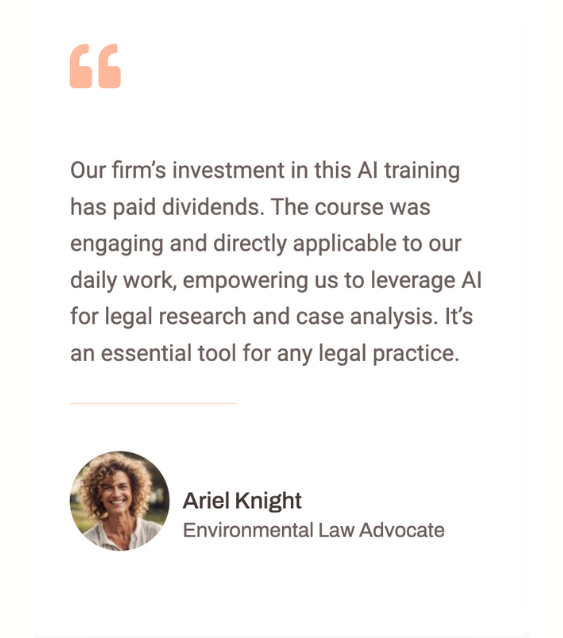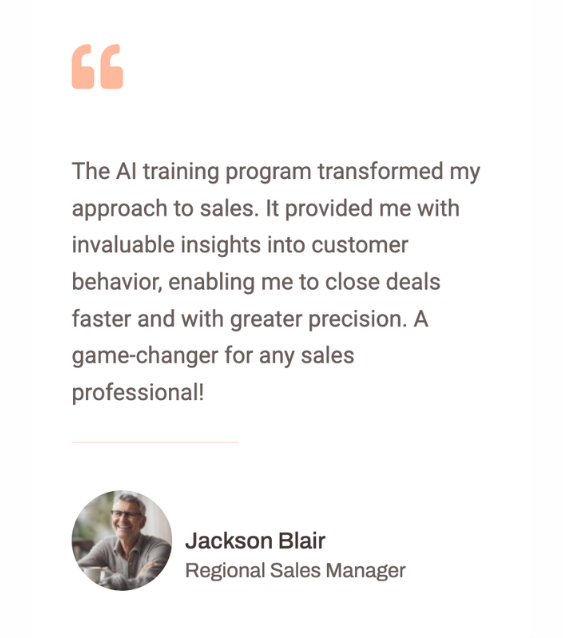Build and Sell No-Code AI Agents with OpenAI Agent Builder (Video Course)
Build real AI agents that take action,no code needed. It's simpler than you'd think: create lead-gen, support, and outreach automations in OpenAI's Agent Builder, then package them as subscriptions for quick wins and steady monthly revenue.
Related Certification: Certification in Building, Deploying, and Monetizing No-Code AI Agents
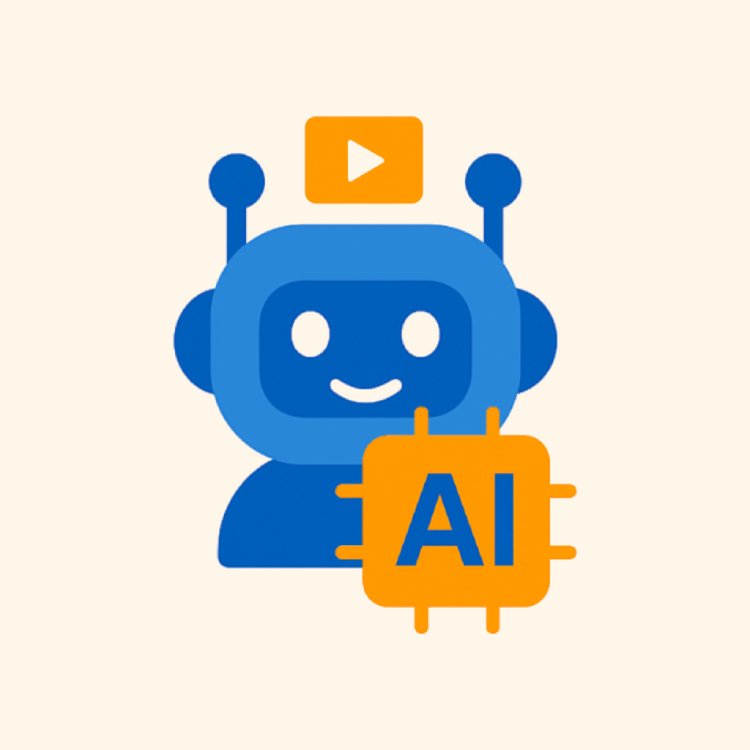
Also includes Access to All:
What You Will Learn
- Design and deploy autonomous agents with OpenAI Agent Builder (no-code visual workflows)
- Package agent capabilities into repeatable SMB services and subscription offers
- Win clients fast using the "Already Done" demo method and low-risk proposals
- Systemize fulfillment with SOPs, evaluations, and templates to scale efficiently
- Apply ethical guardrails, LLM-SEO tactics, and revenue-focused metrics
Study Guide
Open AI's New Agent Builder Builds You an Army of Money-Making Agents (Crazy)
Let's keep this simple. You want leverage. You want systems that make money while you're busy doing the other fifty things life throws at you. That's what this course delivers. You'll learn how to use OpenAI's Agent Builder to create autonomous AI agents that move beyond chat , they act. They research, reach out, schedule, analyze, and deliver results. Then, you'll package those capabilities into repeatable services for small and medium-sized businesses, turn them into subscriptions, and build predictable recurring revenue.
We'll walk through the entire path: what AI agents are, how Agent Builder works (no code, visual workflows), specific business models that actually pay, the "Already Done" client acquisition method, and how to scale from your first client to dozens without drowning in fulfillment. You'll get strategies, templates, examples, and the kind of practical detail you can implement immediately. The goal isn't to geek out on tech. The goal is to turn AI into cash flow.
What This Course Covers (And Why It's Valuable)
You'll build a real skill set that bridges the gap between AI and revenue. You'll learn to:
- Understand AI agents and how they execute multi-step tasks.
- Use OpenAI's Agent Builder to design, test, and deploy production-ready workflows.
- Package agentic capabilities into services SMBs will pay for monthly.
- Acquire clients with a low-risk "Already Done" strategy that cuts through skepticism.
- Systemize delivery so your business scales without you doing more work.
What you're building is more than a tool. To your client, it's like installing an employee inside their business , one that never sleeps, never forgets, and pays for itself. That's an easy sell when you present it right.
Part 1 , Understanding AI Agents: From Answers to Actions
An AI agent is not just a chatbot. It's an autonomous system that can perceive context, make decisions, and take actions to move toward a defined goal. The classic loop is: understand the goal, plan steps, use tools, take actions, evaluate, then continue until the outcome is achieved.
Key agentic capabilities you can deploy:
- Web research: crawl sites, extract structured data, validate info.
- Task management: schedule meetings, update CRM fields, send reminders.
- Automated outreach: fill contact forms, send personalized emails or DMs.
- Data analysis: compile reports, summarize analytics, surface insights.
Example 1:
A roofing lead finder agent searches Google Maps for local roofers, checks each listing for a website, captures phone/email, and compiles a clean CSV of businesses without websites. That CSV feeds your outreach agent automatically.
Example 2:
A customer support triage agent monitors a shared inbox, classifies incoming messages (billing, scheduling, complaint), answers FAQs from a knowledge base, and escalates sensitive issues to a human with a drafted response ready to edit.
Part 2 , OpenAI's Agent Builder: A Visual, No-Code Control Room
Agent Builder is a visual canvas where you drag, drop, and connect nodes to design how your agent thinks and acts. No code needed. It feels like automations, but with intelligence at every step.
Core components you'll use:
- Visual Workflow Creation: Connect nodes that represent actions (classify text, call a model, search the web, send email, update CRM).
- No-Code Environment: Build complex flows without programming.
- Templates: Start from pre-built patterns for customer service, Q&A, data enrichment, or outreach.
- Built-in Evaluation: Test with sample inputs, track outputs, measure accuracy and consistency.
- Exportability: Hand off your agent as code or embed the workflow in apps, sites, and tools.
Design primitives that matter:
- Nodes: Input, model calls, tool calls (APIs), conditional logic, loops, formatters.
- Prompts & Instructions: Define personality, constraints, decision rules at each step ("Only proceed to booking if budget ≤ $X and availability confirmed").
- Tool Integration: Connect calendars, flight APIs, CRMs, email, scraping tools.
- Knowledge Base: Centralized docs your agent learns from to answer business-specific questions.
- Evals: Create test suites so you know your agent works before going live.
Example , Travel Agent (classic workflow):
Input → Classify intent (flight vs itinerary) → Branch:
- Flight: query flight API with destination, dates, price cap → return sorted options.
- Itinerary: research local hotspots, build day-by-day plan with links and estimated costs → return plan with booking prompts.
Example , Lead Gen Agent:
Input niche and city → Web research node scrapes and filters prospects → Classifier checks "website present: yes/no" → Formatter cleans the list → Outreach node drafts personalized initial message or fills contact forms with unique copy per lead.
Part 3 , Build Your First Agent Step-by-Step
Here's a practical way to construct an agent that ties directly to revenue: a lead-sourcing and outreach agent for local SMBs.
Step 1: Define the goal tightly
"Find 50 landscapers within 20 miles of [city] who have a Google Business Profile but no website link; compile name, phone, address, email (if available), and GBP URL into a CSV, then generate personalized outreach lines and prepare form submissions."
Step 2: Sketch the workflow
- Input node: niche + location.
- Research node: Google Maps/Web search scraping.
- Classifier node: "website present?" yes/no.
- Filter node: remove "yes."
- Enrichment node: find contact details from GBP or directories.
- Formatter node: format CSV and dedupe.
- Outreach node: generate personalized first lines, then auto-fill contact forms if permissible.
- Output node: save CSV and a daily status summary.
Step 3: Add the knowledge base
Upload your outreach style guide, sample messages, brand voice, and compliance rules. The agent uses this to keep messages professional, on-brand, and within legal/ethical limits.
Step 4: Connect tools
Calendar for scheduling demos, email service to send follow-ups, CRM to log each lead, and a web form filler for sites that allow contact submissions.
Step 5: Guardrails
- Rate limits on web requests and submissions.
- Permission checks (respect robots.txt and platform terms).
- Human-in-the-loop approval for the first batch of outreach.
Step 6: Evaluation
Create a test set for five niches and two cities each. Validate: scraping accuracy, dedupe, classification, outreach relevance. Iterate until pass rates are consistent.
Example 1:
An appointment scheduler agent reads inbound emails, detects intent to book, proposes available times from a shared calendar, confirms via email, and sends a calendar invite with an SMS reminder set for two hours prior.
Example 2:
A content assistant agent turns a weekly offer from a local spa into five social updates, two email subject lines, and one promotional SMS , all formatted and queued for approval in your marketing platform.
Part 4 , The AI Marketing Agency Model: Build Once, Sell Repeatedly
You're not building a bespoke app for one client. You're building a reusable workflow that solves the same problem for many clients. That's where recurring revenue comes from.
The model in three moves:
1) Build a solution once: a lead follow-up system, a chat agent, a content engine, a website auditor.
2) Sell it repeatedly: offer subscriptions to SMBs who want consistent results without hiring.
3) Stack recurring income: 10 clients at $200/month = $2,000/month. 50 clients and a couple higher-ticket retainers can cover your entire overhead and more.
High-value services SMBs buy:
- Lead Generation & Nurturing: fresh leads + automated follow-up.
- Appointment Booking: fewer no-shows, tighter schedules.
- 24/7 Customer Support: instant answers, escalations, lead capture.
- Automated Content Creation: social posts, emails, ad copy on a cadence.
- Website & SEO Optimization: audits, fixes, and LLM-era visibility.
Example 1:
"AI follow-up vault" , every new inquiry receives a sequence of multi-channel follow-ups until they book. Missed calls trigger text. Form fills trigger emails. Recaptures up to 30% of leaks for a dentist's office.
Example 2:
"Agent-powered web concierge" , a chat widget on a home services site answers FAQs, calculates rough quotes, qualifies, and books estimates after-hours. Owner wakes up to a full calendar.
Part 5 , Agentic Actions in Detail (With Practical Playbooks)
1) Web Research
Use agents to gather market intel and prospect lists.
- Use cases: prospecting, competitor research, pricing scans.
- Best practice: define extraction fields upfront; run light transforms to keep data clean.
Example 1:
A "no-website" discovery agent identifies local businesses with GBP but no site. It compiles 50 prospects daily for your outreach pipeline.
Example 2:
A competitor analyzer gathers top competitors' offers, reviews, and pricing and summarizes gaps your client can exploit in upcoming campaigns.
2) Task Management
Agents sync calendars, assign tasks, and send nudges so deals don't slip.
Example 1:
A retention agent scans CRM for neglected leads (no contact 7 days) and creates tasks for the sales rep with a drafted follow-up message.
Example 2:
A reminder agent messages clients 24 hours and 2 hours before appointments and auto-rebooks no-shows with a quick reschedule link.
3) Automated Outreach
Personalized at scale, without sounding robotic.
- Keep it compliant. Focus on value-first messaging. Always offer opt-out.
Example 1:
Form-submission agent fills a landscaping company's contact form with a one-liner about a specific review and a tailored offer to audit their site for 5 conversion fixes.
Example 2:
Hyper-personalized cold email that references a recent project photo from their Instagram, with a relevant compliment and a clear next step.
4) Data Analysis
Agents compile dashboards, summarize trends, and recommend pivots.
Example 1:
Weekly marketing brief: "Here are your top channels this week, underperformers, and two experiments to run next."
Example 2:
Ad spend governor: pauses any ad group with CAC above target for 3 consecutive days and notifies the account owner with a proposed fix.
Part 6 , Knowledge Bases: The Secret to On-Brand, Accurate Responses
A knowledge base turns a generic agent into your client's in-house specialist. Load it with policies, pricing, FAQs, service areas, tone guidelines, and process documentation. The agent uses this to answer accurately and stay consistent.
What to include:
- FAQs, product/service pages, pricing, terms, service areas.
- Process SOPs (how to book, cancel, escalate).
- Brand voice guidelines with examples and banned phrases.
Example 1:
A wellness clinic's chat agent accurately answers insurance questions, recommends the right service bundle, and hands off to staff if symptoms are flagged as serious.
Example 2:
A real estate agent's site chat can quote commission structures, explain pre-approval steps, and book a buyer consultation without guessing.
Part 7 , LLM SEO: Getting Found by AI Search
Traditional SEO focused on ranking in search engines. LLM SEO focuses on being referenced by AI assistants when people ask for recommendations. You want your client's brand to show up in AI-generated answers.
How to optimize for AI assistants:
- Publish clear, structured, up-to-date service pages with location data.
- Add schema markup (Organization, LocalBusiness, Product, FAQ).
- Use plain-language FAQs that map to common queries.
- Encourage and curate reviews that highlight specifics (speed, guarantee, specialties).
- Create "best-of" and "how-to" content that assistants love to cite.
Example 1:
A home cleaning company's "Service Areas" pages specify neighborhoods, price ranges, and booking process with FAQs that mirror user questions assistants receive.
Example 2:
A dental clinic posts a definitive guide to "Same-Day Crowns" with step-by-step, pricing range, and aftercare tips; assistants pull this as a trusted source when users ask about same-day options nearby.
Part 8 , The "Already Done" Client Acquisition Strategy
This is your foot in the door. A significant portion of small businesses don't have websites. They know they need one. Cost and friction hold them back. You remove both.
The Premise:
"23% to 27% of US small businesses do not have a website." That's millions of prospects.
Step-by-step plan:
1) Identify targets: Find local businesses with a Google Business Profile but no website link , start with service niches (roofing, landscaping, wellness).
2) Build the solution upfront: Use a no-code builder (like the site builder inside GoHighLevel) to launch a clean, niche-specific template. Personalize with their name/logo in minutes.
3) Make an irresistible offer: Low price or even free to install, framed as "already done," with a live demo link.
4) Lower the risk: They see the site before committing. You can put it live within 48 hours. Minimal decision friction.
Sample message you can adapt:
"I recently built a professional website for another client in your industry, but they went a different direction. Since the work is already done, I can offer it to you for a significant discount (e.g., $500) or even for free, in hopes of earning your future business. It's mobile-friendly, designed to generate leads, and I can have it live for you in 48 hours. Here is a link to see it."
Example 1:
A local tree service gets a fully built site with booking form, before/after gallery, and a map of service areas. You include a contact capture that pings them by SMS. They see it working in real-time and say yes.
Example 2:
A Pilates studio receives a clean landing page with class schedule, instructor bios, and a trial offer. You connect Stripe for a low-friction intro package.
Tips:
- Use Loom to record a 2-minute walkthrough of the demo site; it increases replies.
- Give two options: one-time payment or low monthly "rental + hosting." The latter leads naturally to recurring upsells.
Part 9 , From First Sale to Recurring Revenue (Your Upsell Path)
The initial website is the start, not the finish. You've earned attention and trust , now install the agent stack.
Phase 1: The Website
Offer as a $500 one-time fee or $100-$200/month rental/hosting. Emphasize lead capture, speed, and mobile UX.
Phase 2: AI Chat Widget ($97-$197/month)
Add a chat widget trained on their knowledge base. It answers FAQs, captures leads, and escalates edge cases.
Phase 3: Full AI Automation ($750-$4,000+/month)
Bring in AI-driven SEO, Google Ads management with AI summaries, appointment scheduling, automated follow-ups, review generation, reporting agents , the whole system.
Example 1:
A med spa starts with a site. You add a 24/7 chat that recommends services. Then you layer in an abandoned lead rescue agent that texts inquiries with a limited-time offer. Revenue lifts and churn drops.
Example 2:
A roofing company begins with a basic site. You add a chat widget that qualifies job size and urgency, then an estimate scheduler with weather-based rescheduling logic. Sales team closes more with less effort.
Part 10 , Practical Service Blueprints You Can Sell
Lead Generation & Nurturing
- Deliverable: Prospect lists + multi-touch outreach + auto-follow-up.
- KPIs: response rate, appointments booked, cost per lead.
Example 1:
A contractor lead engine produces 100 new leads/month with unique first lines and an outreach cadence across email and forms.
Example 2:
A boutique gym prospecting agent targets new move-ins, personalizes offers, and routes hot leads to a sales rep with scripts.
Appointment Booking
- Deliverable: Scheduler integrated with calendar + reminders + no-show recovery.
- KPIs: show-up rate, time to book, no-show reduction.
Example 1:
A dentist gets automated reminders and a re-activation campaign for overdue cleanings.
Example 2:
A real estate team gets a "speed-to-lead" agent that calls new leads within one minute and books showings.
24/7 Customer Support
- Deliverable: Chat widget trained on knowledge base + escalation flow.
- KPIs: first-response time, resolution rate, lead capture rate.
Example 1:
An HVAC site chat triages emergency vs. routine calls and prioritizes dispatch.
Example 2:
A law firm's intake bot collects details, qualifies, and books consultations.
Automated Content Creation
- Deliverable: Weekly social/email/ad copy created and queued.
- KPIs: content output consistency, CTR, lead volume attributed.
Example 1:
A salon receives a monthly "promo pack" , posts, stories, emails, and SMS offers aligned with seasons.
Example 2:
A B2B contractor gets two authority blog posts and three LinkedIn updates weekly, plus a monthly lead magnet refresh.
Website & SEO Optimization
- Deliverable: Technical audit, on-page fixes, LLM SEO content, review prompts.
- KPIs: organic traffic, local pack visibility, assistant mentions.
Example 1:
A chiropractor's site is restructured around services + neighborhood pages with schema, boosting local inquiries.
Example 2:
A landscaping company's FAQ library is built to match common assistant questions, increasing assistant-driven referrals.
Part 11 , Tools and Stack to Execute
Core platforms:
- OpenAI Agent Builder for intelligent workflows.
- A CRM/marketing platform like GoHighLevel for sites, funnels, SMS/email, and automations.
- Zapier/Make/N8N for auxiliary integrations where needed.
- Communication tools: email service, SMS provider, telephony.
- Data tools: lightweight scraper, Google Sheets or a database.
Example 1:
Agent Builder fetches leads → pushes to CRM → triggers multi-step outreach → logs replies → books appointments → sends daily summaries to the owner.
Example 2:
Chat widget intake → qualifies lead → writes CRM note → schedules consult → triggers onboarding sequence with a pre-filled form.
Part 12 , Ethical Outreach, Compliance, and Guardrails
Automate responsibly. Your reputation and your client's brand depend on it.
Guidelines:
- Follow anti-spam laws; get consent where required. Provide opt-out.
- Respect platform terms; don't automate where prohibited.
- Rate limit form submissions. Aim for quality, not spray-and-pray.
- Human approval on initial outreach batches.
- Transparency: represent your client accurately, avoid false claims.
Example 1:
Before submitting forms, your agent checks a whitelist of allowed domains and pauses if the daily quota is reached.
Example 2:
For email, your sequence includes plain-text, value-first messages, a real signature, and an easy opt-out line.
Part 13 , Pricing, Packaging, and Positioning
Price on outcomes, not effort. Keep offers simple and results-focused.
Packaging ideas:
- Starter: Site + chat + basic follow-up ($297-$497/month).
- Growth: Add lead gen + appointment agent + reports ($997-$1,997/month).
- Pro: Full automation suite + ads management + LLM SEO ($2,500-$4,000+/month).
Positioning language you can use:
"It's like having an employee installed within their business." But this employee works every day, responds instantly, and never needs a vacation.
Example 1:
Offer a guarantee: "Book 15 qualified appointments in 30 days or we work for free until we do."
Example 2:
Outcome framing: "We lower your no-show rate by half and recover missed calls automatically , you just show up to the jobs."
Part 14 , Systemizing Fulfillment So You Can Scale
You don't want your growth to become your prison. Build systems.
SOPs to standardize:
- Onboarding checklist (access, brand voice, knowledge base docs, goals).
- Agent setup template for each service type.
- QA checklist before go-live (eval pass rates, fallback messages, escalation rules).
- Reporting cadence with a simple weekly summary agent.
Example 1:
Create a "knowledge base intake" form your client fills out once: services, pricing, service areas, FAQs, tone. Your agent imports and organizes it automatically.
Example 2:
A "new client in 48 hours" SOP: clone site template → customize → connect chat → load knowledge base → test → go live → send Loom overview.
Part 15 , Measuring What Matters
Track the metrics tied to money. Ignore vanity.
Core metrics:
- Leads generated, qualified rate, booked appointments, show-up rate.
- Response time, resolution rate (for support agents).
- Cost per lead, cost per acquisition (for paid channels).
- Revenue per client, churn rate, LTV-to-CAC ratio.
Example 1:
Your weekly report agent emails: "12 new leads, 7 qualified, 5 booked, 1 no-show. Top channel: Google Maps form submissions. Recommendation: Double down on [keyword cluster]."
Example 2:
Support dashboard: average first response time under 10 seconds, 68% automated resolution, 32% escalation, 41 new leads captured from after-hours chat.
Part 16 , Advanced Agent Patterns
Once the basics pay rent, level up how your agents think and collaborate.
Multi-agent orchestration:
Use specialized agents for research, writing, outreach, and scheduling, coordinated by a conductor agent.
Human-in-the-loop:
Insert approval steps for sensitive actions. The agent drafts; you approve with one click.
Memory and context:
Persist conversation history and prior actions so your agent improves over time.
Evaluation harness:
Keep a battery of test cases and sample inputs; require pass rates before updates deploy.
Example 1:
A real estate pipeline: a researcher agent finds FSBO listings, a writer agent drafts outreach, a verifier agent checks tone and compliance, and a scheduler agent books showings after positive replies.
Example 2:
A B2B services pipeline: a data agent enriches leads, a messenger agent personalizes intros with case studies, a follow-up agent handles objections with knowledge-base-backed answers and routes hot leads to sales.
Part 17 , Realistic Case Scenarios (What This Looks Like in Action)
Scenario 1: Home Services , Roofing
- Day 1: "Already Done" website demo + one-time $500 fee; site live in 48 hours.
- Week 1: Add chat widget with job-size qualifier; connect calendar; enable SMS reminders.
- Month 1: Lead gen agent sources 200 local prospects; outreach converts into 12 estimates booked.
- Results: Fewer no-shows, faster response, two extra jobs that pay for the service thrice over.
Scenario 2: Real Estate Brokerage
- Start: Intake bot handles buyer/seller inquiries, books calls, and tags lead type in CRM.
- Add-on: Content agent publishes weekly market snapshots and open house promotions.
- Scale: LLM SEO pages for neighborhoods and school districts; assistant mentions increase.
- Results: Improved lead routing, more showings, consistent content without hiring staff.
Part 18 , Implications & Applications for Different Audiences
Entrepreneurs:
Launch a lean, cash-flow-first business without a technical background. Focus on solving common SMB problems and stack recurring services.
SMBs:
Get enterprise-grade automation at an accessible price. Better responsiveness, more leads, fewer hours wasted.
Educators & Trainers:
Teach practical AI agency skills: agent design, no-code build, recurring revenue, ethical deployment, and client success.
Platform Developers (e.g., GoHighLevel):
There's clear demand for an "all-in-one" platform that combines sites, CRM, and AI agents , a true business-in-a-box for agencies.
Part 19 , Action Items & Your Execution Plan
1) Master an all-in-one platform
Get comfortable with a stack that includes site/funnel building, CRM, and AI automations. GoHighLevel is a strong choice because it centralizes delivery.
2) Pick a niche you know
Home services, real estate, wellness , all proven. Familiarity speeds trust and fulfillment.
3) Build a lead list
Use an AI lead-sourcing agent (or a tool like Mattis AI) to find local businesses with GBP but no website. Keep a daily prospecting cadence.
4) Execute the "Already Done" method
Choose one business from your list, build a template site, personalize it, and send the irresistible offer with a Loom walkthrough.
5) Map your upsell path in advance
Website → AI chat → full automation suite. Have your service catalog and price points ready.
6) Systemize fulfillment
Templates, SOPs, and a reporting agent that emails clients weekly with wins and next steps.
Part 20 , Best Practices for Designing Reliable Agents
Clarity over cleverness:
Write explicit instructions. Define goals, constraints, success criteria, and stop conditions.
Small, testable steps:
Break big workflows into mini-flows you can eval independently.
Guardrails:
Permission checks, rate limiting, safe fallbacks ("I don't have that information yet, but I can connect you to a human").
Observability:
Log inputs/outputs and key decisions. Summarize everything your client cares about weekly.
Example 1:
In your outreach flow, add a content safety check that rejects messages that sound pushy or non-compliant and requests a rewrite.
Example 2:
In your scheduler, add a validation step to avoid double-booking across rooms or team members.
Part 21 , Overcoming Common Obstacles
"I'm not technical."
You don't need to be. The visual builder, templates, and examples you'll create are enough. Start with simple flows and stack complexity slowly.
"What if a client asks for custom features?"
Productize your offers. If it would serve most clients, add it to your base product. If it's a one-off, price it as a premium add-on.
"What if the agent makes mistakes?"
Add human review steps, tighten your knowledge base, and expand your eval test set. Mistakes drop as your system matures.
Example 1:
Deploy a "fallback to form" behavior: if the chat agent can't answer confidently, it routes to a form that collects details for human follow-up.
Example 2:
Run shadow mode for a week: the agent makes recommendations but a human clicks send. After accuracy hits your threshold, turn on auto mode.
Part 22 , Verification: Did We Cover Everything You Need?
Before we wrap, quick confirmation that you've got the full playbook:
- The emergence of autonomous AI agents and their core actions (research, task management, outreach, analysis) with examples.
- A full overview of OpenAI's Agent Builder: visual workflows, no-code, templates, evals, and export/integration, including the travel agent example and a lead gen agent example.
- The AI marketing agency model , build once, sell repeatedly , with recurring revenue math and specific high-value services.
- The "Already Done" client acquisition method: find targets, build upfront, send the irresistible offer, reduce risk, plus a sample script.
- The upsell path from website → AI chat widget → full automation with pricing bands.
- Knowledge bases, LLM SEO, metrics, ethics/compliance, and systemization for scale.
- Implications for entrepreneurs, SMBs, educators, platforms; action items to start now.
- Quotes included: "23% to 27% of US small businesses do not have a website." and "It's like having an employee installed within their business."
Conclusion , Turn Agents Into Income
Your advantage is simple: you can now build an autonomous digital workforce without writing code. Agents don't get tired. They don't forget. They execute. When you wrap that into a service that solves clear SMB problems , more leads, more bookings, better support , you create a business that compounds.
Start with one agent that delivers value end-to-end: lead sourcing, outreach, or booking. Use the "Already Done" method to make the first sale a no-brainer. Then add the chat widget. Then layer full automation. Each client becomes a predictable stream of revenue, and your time shifts from doing to designing and refining.
The constraints are straightforward: keep it ethical, reduce friction, measure what matters, and evolve your templates. The opportunity is massive because most small businesses still run on manual processes and delayed responses. You can change that , and get paid well for it.
Take the first step today: build one agent, deploy it for one client, and let the results pull you forward. Your future agency isn't a dream. It's a stack of agents quietly working in the background, producing outcomes your clients happily pay for every month.
Frequently Asked Questions
This FAQ exists to answer the most common,and most useful,questions about building, selling, and scaling AI agents with OpenAI's Agent Builder. It moves from basics to advanced strategy so you can go from curiosity to client revenue without wasting cycles. Use it to clarify concepts, avoid expensive mistakes, and shortcut implementation with proven tactics and examples.
What is an AI agent?
An AI agent is software that understands a goal, plans steps, and takes action across tools to achieve that goal,without you hand-holding every move. It's different from a simple chatbot that only replies. Agents can research the web, fill forms, send emails, update CRMs, book meetings, and follow if/then logic to handle multi-step workflows. Think of it as a digital employee that works from clear instructions and access to tools.
Key point:
Agents are "agentic",they don't just answer; they execute. That's why they're useful in revenue operations, support, and marketing.
What kinds of tasks can AI agents perform?
Agents can run high-value tasks end-to-end with context and rules you set. Common use cases: lead generation (search web, compile contacts, draft outreach), customer support (FAQ handling, ticket triage), sales (qualification, booking, follow-ups), content (posts, emails, ad copy), analytics (competitive research, reporting), and website optimization (SEO audits, content refreshes). They can also orchestrate multi-app workflows: "Find 20 prospects, enrich contacts, email sequences, and log results in my CRM."
Example:
A home services agent finds local homeowners' associations, scrapes contact info, writes personalized emails referencing neighborhood details, sends via your ESP, and books quotes directly onto the calendar.
What is OpenAI's Agent Builder?
Agent Builder is a visual tool for creating custom AI workflows without code. You connect nodes (inputs, model calls, tools, conditions) on a canvas to define behavior. It supports instructions, tool integrations (APIs, web, email, calendars), memory, and evaluation so you can test before deployment. The result: repeatable, reliable agents that you can hand to clients or plug into your stack.
Example:
Build a "Trip Planner" agent that classifies intent (flight vs. itinerary), queries travel APIs, composes options, and emails a formatted plan,no custom code required.
How does Agent Builder compare to other automation tools?
Zapier or Make run deterministic automations: trigger → action. Agent Builder embeds reasoning into the flow. It uses LLMs to classify, extract, decide, and generate content inside your automation. You still get triggers and actions, but with AI-native steps to handle ambiguity, branching logic, and unstructured data.
Key differences:
1) AI is built-in, not bolted on. 2) Stronger for unstructured inputs (emails, webpages). 3) Includes evaluation tools so you can measure output quality before rollout.
Do I need to be a programmer to build AI agents?
No. Agent Builder is no-code/low-code. You'll get farther faster if you understand workflows, prompts, and how businesses operate than if you can write perfect JavaScript. Developers can export and extend with code when needed, but many profitable agents are built visually. Focus on the problem, the outcome, and a clean process.
Reality check:
Non-technical agency owners regularly deploy agents for lead gen, support, and booking. Strong prompts, clear rules, and simple integrations beat over-engineering.
How can I access OpenAI's Agent Builder?
Agent Builder is available through the OpenAI Platform, separate from the consumer ChatGPT interface. You'll need a platform account with billing enabled to build, test, and deploy. Access includes a visual canvas, tool configuration, and evaluation features.
Tip:
Set up a project with a dedicated API key, organize environments (dev/staging/production), and track usage so you can calculate margins for client work.
How can AI agents generate revenue?
Build agents that solve persistent business problems and charge recurring fees. Top value props: more leads, faster responses, higher show rates, and better customer experience. Package outcomes, not tasks. For example, "We install an AI intake + follow-up system that books you 15-30% more appointments" sells better than "We built a bot."
Example model:
Local dentist: website + AI chat widget + automated reminders + review requests → monthly subscription with clear ROI.
What is the "AI subscription-based client" model?
You acquire small businesses and solve a specific pain end-to-end for a monthly fee. The offer is simple, the setup is fast, and the value is obvious. Start with a quick win (site or widget), then layer in recurring services tied to outcomes (leads, bookings, reviews). Keep delivery standardized so you can scale without chaos.
Simple target:
10 clients at $200/month covers baseline costs and proves the model. Then add higher-tier retainers for SEO, ads, or custom agents.
What industries should I target?
Home services (roofing, plumbing, landscaping, cleaning, electrical), local medical, legal, real estate, and trades respond well. Owners value booked jobs, fast response times, and less admin work. They're busy and open to "done-for-you" offers that remove effort and add revenue.
Quick filter:
If a missed call = lost money and speed-to-lead matters, an AI agent plus automations will land and stick.
What pitfall should I avoid early on?
Building cool tech with no buyer. Pick a problem tied to cash flow, validate with a few owners, then build the smallest agent that solves it. Don't customize everything for everyone; you'll drown in support. Productize: one niche, one offer, one stack. Improve only what blocks revenue or retention.
Rule:
Client need first. Agent second. Tools last.
What is the "Already Done Method" for acquiring new clients?
Show, then sell. You find a business without a website, build a finished site from a template, and present it as already done at a steep discount. The risk is gone; they can see and click it now. This removes friction, creates trust, and opens the door to recurring services after the initial purchase.
Why it works:
People buy what they can see. A live asset beats a pitch deck every time.
How do I find businesses without a website?
Two methods: manual and automated. Manually, search Google Maps for your niche and city, open "More businesses," and scan listings missing the "Website" button,later pages often have unoptimized profiles. Automated, use an agent to scrape Google Business Profiles and filter for missing sites in a target area. Export as a CSV for outreach.
Prompt example:
"List 15 [niche] in [city] with a Google Business Profile and no website. Include phone and address."
How do I build a professional website without coding?
Use a platform with industry templates (e.g., GoHighLevel). Pick a template, swap branding, edit text, add images, connect forms, and publish. Most deliver mobile-friendly, fast sites in under an hour,no HTML/CSS required. Keep structure simple: hero, services, proof (reviews), CTA, contact.
Pro tip:
Pre-build 3-5 niche templates so you can spin up "Already Done" sites in minutes.
After selling a website, what's the next step for recurring revenue?
Install an AI chat widget to capture leads 24/7, answer FAQs, and book appointments. Pair it with automated SMS/email follow-ups and reminders. This boosts conversion and show rates,easy to prove and easy to price monthly. Add reputation management next for steady review growth.
Positioning:
"Your site is the storefront. The AI is the salesperson that never sleeps."
How do AI chat widgets use a knowledge base?
The widget gets "smart" by ingesting the business's information. Feed it URLs to crawl, PDFs (pricing, services, policies), and internal FAQs. The agent retrieves relevant chunks at runtime and answers with business-specific facts. Keep data current and concise to improve accuracy.
Example:
Upload service areas, pricing tiers, and warranty terms so the agent quotes confidently and books qualified leads.
How can I automate appointment confirmations and reminders?
Build a simple workflow: trigger on new booking → send instant confirmation (email/SMS) → reminder 24 hours before → reminder 1 hour before. Include reschedule links and internal alerts for no-response cases. You'll lift show rates and reduce manual back-and-forth.
Template:
"Thanks for booking with [Business]. Your appointment is [time]. Questions? Reply here. Need to reschedule? [Link]."
How should I structure pricing?
Use tiers that ladder from quick wins to high-value retainers. Entry: template site or setup fee + chat agent subscription. Mid: LLM-aware SEO, reviews, follow-ups. High: ads, custom agents, reporting. Price on outcomes, anchor with proof, and keep margins clear (API, hosting, time).
Baseline map:
$500 site (or rent monthly), $97-$297/month chat + automations, $750-$4,000/month SEO, higher for ads and custom projects.
Can this business model scale to six figures?
Yes. The engine is standardized delivery + recurring revenue. A lean agency with 20-40 clients across tiers can hit strong monthly totals. The fastest path: one niche, one repeatable offer, weekly prospecting, and clear upsell routes (chat → SEO → ads). Document everything so fulfillment doesn't depend on you.
Signal you're ready to scale:
Prospects ask the same questions, your onboarding is checklist-driven, and results are predictable.
What's the difference between an agent and a regular automation?
Automations execute fixed steps from structured inputs. Agents can interpret messy inputs, make decisions, and choose paths. They can read an email, extract intent, find missing data, and complete the task,even if the format changes. Use automations for repeatable data flows; use agents where judgment and language understanding matter.
Rule of thumb:
If the input is unstructured text and the output requires choices, an agent likely wins.
What skills do I need to succeed with Agent Builder?
You need problem mapping, prompt writing, basic data hygiene, and client communication. Helpful additions: light API knowledge, CRM concepts, and funnel math. You don't need to be a coder; you do need to think in processes and outcomes.
Skills stack:
1) Niche insight 2) Offer clarity 3) Workflow design 4) Prompt patterns 5) Simple reporting.
How do I keep agents accurate and reduce hallucinations?
Constrain scope, use retrieval from a clean knowledge base, and add guardrails. Provide explicit instructions for refusal cases, require citations for claims, and route uncertain answers to a human. Log interactions and review edge cases weekly. Small, tight prompts beat vague, long prompts.
Checklist:
Short system prompt, retrieval-only for facts, confidence thresholds, human-in-the-loop for high stakes.
How do I handle privacy and compliance?
Collect the minimum data required, encrypt at rest and in transit, and limit agent access by role. Get consent for recording or storing conversations. For sensitive verticals (medical, legal, finance), avoid processing protected data through tools that don't support required safeguards. Document data flows in your proposal and contract.
Best practice:
Mask PII where possible, set retention windows, and restrict logs to need-to-know.
How much does it cost to run agents (API usage)?
Cost depends on model, tokens, tools, and traffic. Keep prompts lean, cache static instructions, and use smaller models where quality allows. Retrieve from a knowledge base to cut token usage. Measure average tokens per session and set rate limits per client plan.
Pricing tip:
Bundle a monthly usage allowance into your plans, then charge overages or throttle gracefully.
How do I choose a profitable niche?
Pick a niche where speed-to-lead matters, the prospect value is high, and owners are reachable. Validate by talking to five operators and asking about missed calls, no-shows, and lead quality. If one fix touches revenue fast, you've got a niche worth building for.
Signals:
High average job value, clear seasonality, and obvious bottlenecks (intake, follow-up, reviews).
How do I measure ROI for clients?
Track inputs and outcomes: leads captured, response time, bookings, show rate, close rate, and revenue per job. Tie agent actions to conversions with UTM tags and CRM stages. Report monthly with a simple dashboard: what happened, what it's worth, what's next.
Simple math:
(Added bookings × average profit per job) - your fee - ad spend = net impact.
What is LLM SEO and how is it different from traditional SEO?
Traditional SEO optimizes for search engine crawlers and SERPs. LLM SEO optimizes for AI answers: clear, factual, structured content that agents can quote. Focus on FAQs, service pages with explicit details, pricing ranges, service areas, and policies,plus schema markup and consistent data.
Action:
Write content the way an assistant would answer: concise, accurate, and source-backed.
How do I build a high-quality knowledge base?
Start small and specific: services, pricing ranges, hours, coverage areas, guarantees, and scripts. Use short, atomic documents with clear titles. Update on every change request. Avoid long PDFs full of fluff. Add canonical answers and disallow the agent from guessing outside its sources.
Format:
"Question → Canonical answer → Source link." Keep it clean and current.
What is human-in-the-loop and when should I use it?
Human-in-the-loop means the agent routes certain cases for review or approval. Use it for high-value, high-risk actions: custom quotes, refunds, legal claims, medical advice, or anything with compliance exposure. Set confidence thresholds: if below, escalate to a human with context.
Workflow:
Agent drafts → human approves/edits → agent sends/logs.
Certification
About the Certification
Get certified in building and selling no-code AI agents with OpenAI Agent Builder. Design, deploy, and monetize lead-gen, support, and outreach automations as subscriptions that drive ROI for teams,fast to launch, simple to maintain.
Official Certification
Upon successful completion of the "Certification in Building, Deploying, and Monetizing No-Code AI Agents", you will receive a verifiable digital certificate. This certificate demonstrates your expertise in the subject matter covered in this course.
Benefits of Certification
- Enhance your professional credibility and stand out in the job market.
- Validate your skills and knowledge in cutting-edge AI technologies.
- Unlock new career opportunities in the rapidly growing AI field.
- Share your achievement on your resume, LinkedIn, and other professional platforms.
How to complete your certification successfully?
To earn your certification, you’ll need to complete all video lessons, study the guide carefully, and review the FAQ. After that, you’ll be prepared to pass the certification requirements.
Join 20,000+ Professionals, Using AI to transform their Careers
Join professionals who didn’t just adapt, they thrived. You can too, with AI training designed for your job.

